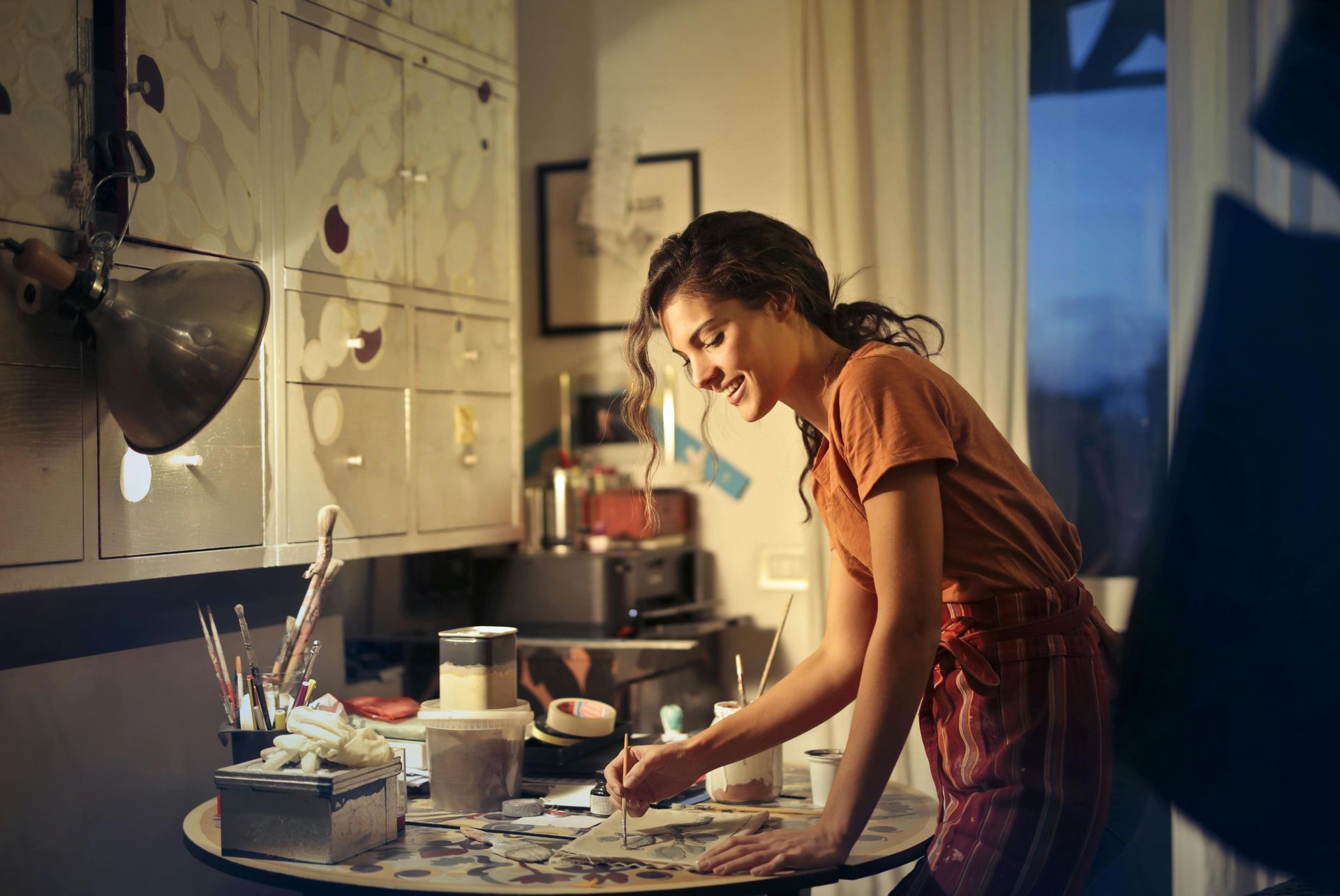Arts in Positive Health & Stress Management

The idea that the arts can make a positive contribution to the health of individuals and communities has been around for a long time.
However, it is really in the last 20 or so years that this realisation has begun to occupy a more recognised space within mainstream health provision.
The huge potential that arts engagement can have is
enhancing a wide range of positive health outcomes and fits well with the biopsychosocial model of health introduced in a previous blog.
In this article, the term ‘arts in health’ will be explained and some interesting examples of its positive impact in different health settings will be examined. Lastly, the powerful role of the arts in a creative approach to stress reduction and management will be considered.
Arts in health activity can include a very broad range of the arts as the catalyst. For
example:
- Visual art forms, such as drawing, painting and photography
- 3D art forms, such as, mask making, textiles and clay work
- Performance art forms, such as, dance, music, drama
- Design art forms, such as, film, new media or architecture
Activities can be directed towards a broad range of physical or mental health conditions and can be aimed at improving prevention or coping outcomes for individuals, relatives, medical staff, carers or even whole communities.
The flexibility of art forms and potential application of arts in health activity to different health contexts make this an area rich with possibility for creative innovation and positive impact.
Arts have been incorporated into the design of healthcare spaces in recognition of how the environment can affect health outcomes (Fancourt, 2017).
For example, relaxing colour schemes or wall art; calming music or sounds played in high dependency care spaces; garden designs incorporated into hospital settings; artwork or film in waiting zones; communal singalong groups in hospital foyers and so on.
A particularly interesting example of the positive integration of an ‘arts in health’ approach is found in the design of De Hogeweyk Dementia Village. Here, creative attention has been paid to the role of the design environment in shaping positive health outcomes for individuals living with dementia – you can find out more here.
Stress is an everyday fact of life for most people. Different response or coping styles can have a huge impact on how an individual experiences stressful situations.
Unfortunately, some people can adopt unhealthy or unhelpful response styles when faced with stressful feelings. For example, comfort eating, alcohol, illegal substances or as discussed in the previous blog, stress bragging.
However, arts engagement has been shown to have a positive effect on feelings of stress and anxiety. It is known that both acute and chronic stress can result in physical and mental ill health, so the stress-reduction impact that can come from working with different art forms is an important finding for positive health.
Examples include, arts interventions shown to reduce the stress of living with chronic pain; the use of music, creative writing or drawing to induce positive mind states; arts engagement to empower and establish a positive sense of self (e.g. Photovoice) or to find new perspectives on challenging situations.
Arts engagement in group settings also offers powerful opportunities to enhance social connection, social support and positive self-identity. All of which can expand a person’s ability to manage stressful experiences in an enjoyable and health-promoting way.
If you would like to learn more about the positive impact that arts engagement can have on your health and wellbeing, why not enrol on our groundbreaking 6-week
stress reduction programme – RESTORE. Contact us to find out more and book your place!
Fancourt, D. (2017). Arts in Health – Designing and Researching Interventions. Oxford University Press. Oxford, UK.










